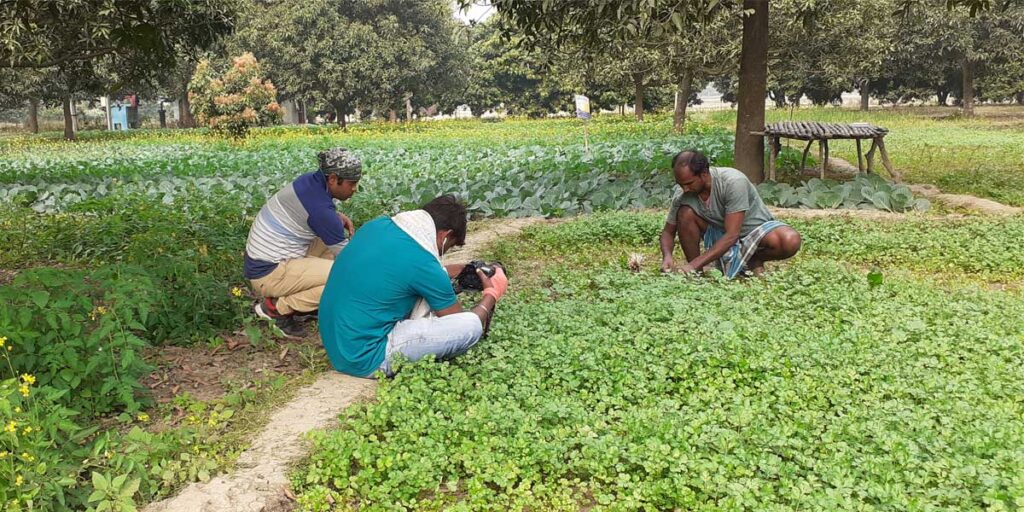
Last Updated on 16 March 2024
Production Diary GAP Day 2
January 1, 2020; Traveled to Berhampore from Kolkata; Shooting to start on the morning of Jan 2, 2020
This time, on the Day 2 of GAP documentation, we have to shoot in a few villages of the Gangetic plain of West Bengal, possibly the most talked about agro-climatic zone in Bengal, being in the World’s largest delta.
A few days back we shot at a village on the tip of the Bay of Bengal. Day 1 for GAP was okay, but not to the extent we expected. This was partly because of the logistic issues. People, managing logistics and local travel, often cannot foresee the issues or predicaments that the crew could encounter during the shoot. The most obvious impact is the less quantity of footage or the footage obtained is not of so high quality.
Even though we reached the location the night before, we couldn’t make it there on the field on time. This was partly due to a delayed journey in the morning due to fog. But a lackadaisical approach on the part of the organization personnel and some nodal persons was responsible too for a not-so-yielding day of the shoot.
We reached Berhampore, some 220 km from Kolkata on the previous night and insisted that we start early the next morning i.e 2nd of January, 2020.
Mirzapur Paddy field, 45 Kms off Berhampore
This time no natural or human intervention delayed our departure, the next morning, from the guest house we had put up with and we reached the paddy field some 9.45 ish.
The idea here is to capture a few GAP farmers who mostly cultivate paddy and a few vegetable farmers. The Gangetic plain is one of the most yielding regions in terms of soil fertility and multiple cropping.
Traditional croppings like paddy and jute cultivation are mostly seen here. We found the use of chemical fertilizers in abundance and there came the need of introducing Good Agricultural Practices or GAP. The introduction of GAP made farmers aware of the damage caused by the indiscriminate use of chemical fertilizers. They felt the urge to revert to using bio-inputs, not only to reduce the cost of farming but also to restore an already dilapidated soil ecosystem.
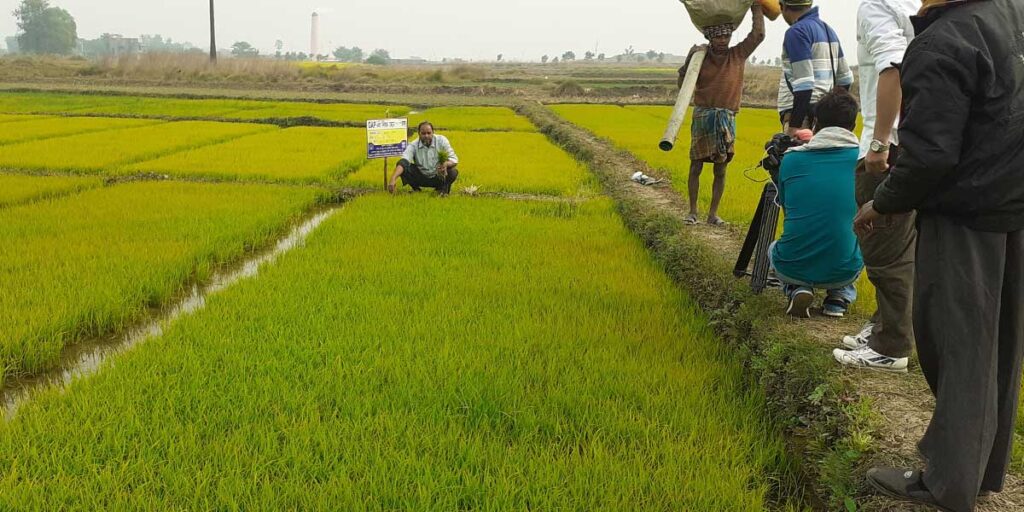
We got him, named Shanu Sheikh, working in his field. Captured his interview while him being at work. He said, many of his fellow villagers, most of whom are engaged in paddy farming, expressed their interest in adopting GAP techniques.
GAP techniques are nothing but a wholesome approach to reducing chemical inputs in farming and gradually increasing bio-inputs. Apart from decreasing the farm input cost, this helps improve soil health with greater efficacy of micro-nutrient and beneficial organisms. On a long-term basis, this results in a healthier soil environment that helps both the crops and the producers.
Despite the fact that Murshidabad’s soil is the most fertile, being in the Gagentic plain of Bengal, the need for implementation of GAP is nowhere more evident than here, for the simple reason that more farming means more chemical inputs in the soil.
And fertile soil like this offer multi-cropping throughout the year. So we had a number of opportunities in terms of B-rolls and interviews as well. We asked the GAP farmers how has it, the implementation of GAP, changed their profitability in farming in the light of erstwhile agricultural practices.
In agreement with GAP implementation and the efficacy of the techniques, the paddy farmers unequivocally stressed the sustenance of the efforts from both ends of the farming communities and the implementing agencies as well.
We chanced to see a few beds of vermicompost close to the Mirzapur paddy field and the farmers mentioned that it’s helping help adopt organic fertilizers they were not so used to before.
We finished the shoot in the paddy field of Mirzapur before a short tea break and moved out to Katnai, a tiny village in Raghunathganj I block.
Katnai Field; A vegetable crop farmer
Katnai offered a small and cozy setup for shooting and visuals. We suddenly felt wide apart from the din and bustle and roadside noise, clacks and clanks of semi-urban ambiance beside the national highway.
The GAP farmers, in this village, are mostly engaged in vegetable cropping and the techniques they adopted recently surely made a positive impact in terms of yield and cost of farming.
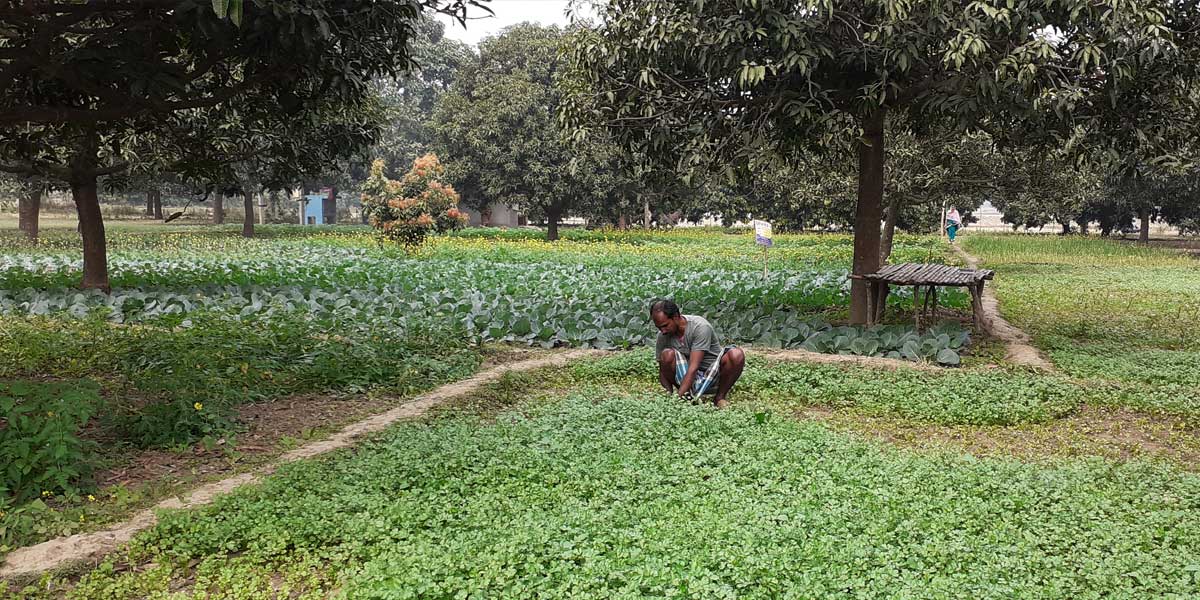
An abrupt change of scene setting from a highly noisy ambiance to a calm and quiet hamlet requires you to settle down a bit, so did it for us too. This village offered us a typical postcard visual of cropping and field side small tent. Beside the field is a bamboo-pole-made seat for perching. Shadowed under a mango tree, this would surely offer a respite during a scorching summer. Thankfully, this is early Jan.
Tufan, the GAP farmer, made it clear that introducing Good Agricultural Practices helped him enhance his yield and attain a longer shelf life for the crops. Vegetables are highly perishable and even a 20% increase in shelf life could make a huge difference in fetching a better price. He stated that there is a demand for GAP produce in the market as they last longer.
This shelf life is important for crops, particularly fruits, and vegetables. Excessive use of chemical inputs makes the stem and leaves of the plants more succulent. Because they draw more water under the effect of the chemical inputs than they would have otherwise needed. The use of organic fertilizers and composts offsets this effect of chemicals and prevents the plant body from becoming so succulent. This eventually extends the longevity of the crops. Besides, the watery plant bodies, stems, and leaves attract more pests and diseases. The combined use of chemical and bio-inputs prevents such vulnerability to some extent.
He was engaged in winter cropping. We captured him at his field harvesting coriander.
Village Resource Centre (VRC)
The program of Good Agricultural Practice aka GAP mandated the setting up of a VRC or Village Resource Center at each GAP village to render services conducive to GAP farming techniques. Every VRC is housed with farm inputs like composts, microbial inoculants, bio-pesticides, and some literature with technical know-how.
We visited one such in a nearby village and shot for a short sequence. One of the things while shooting such a scene set up, where a few people would be found to interact with nodal persons inside the VRC, would be to make the shot look least contrived.
What we do in such cases is roll the camera, often in standby mode, to get the props to settle down and start talking informally. We always tell those people to think as if we’re nowhere there. Once they become confident before the camera, we get the shots. 7 out of 10 times, this technique works.
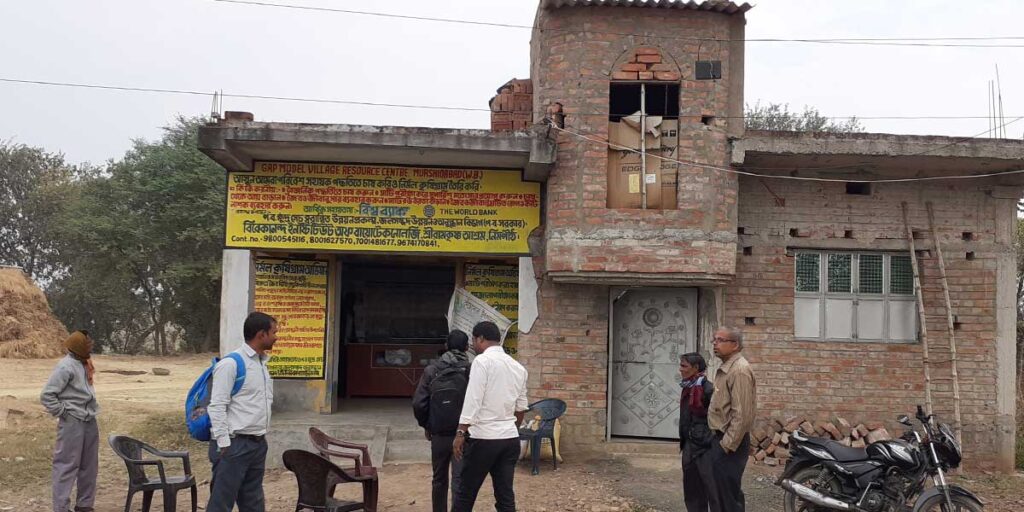
We had a few shots inside this recently formed setup. The nodal persons were made to interact with the villagers disseminating the advantage of adopting the GAP techniques along with their traditional means of cultivation. Not a very satisfactory take for sure, but we have to take many such shots and later decide upon them during post. After all, these are program components and we’re carrying out video documentation.
Interviews
It was fast getting dimmed and we had no option but to hurry. There was a CTO or Cluster Technical Officer and a para worker. We interviewed both of them under the dying light of dusk.
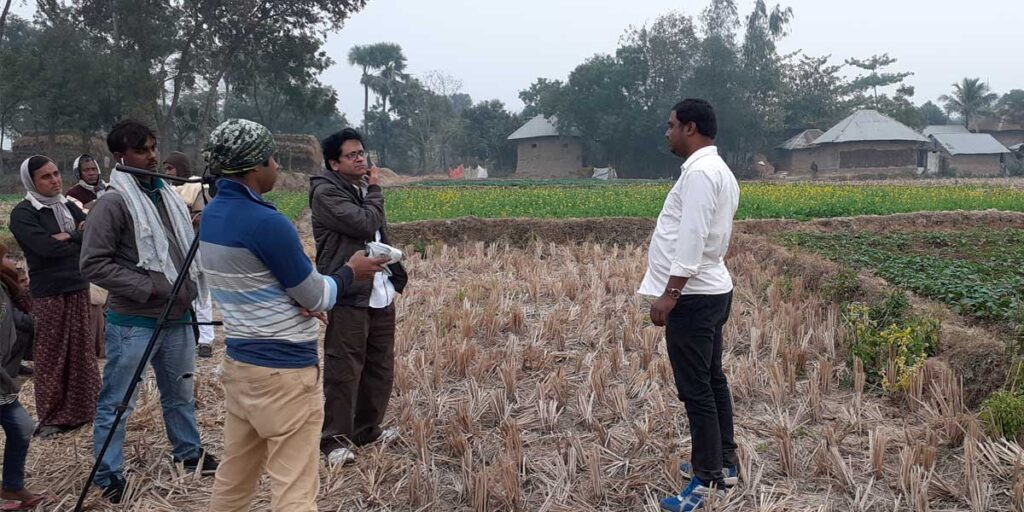
Recording interviews in the remote corner of the villages give us the pleasure of sound recording in a relaxed way. Less ambient noise means more control and a greater scope of regulation.
Day 2 ended on a better-than-Day 1 note in terms of both the quality and quantity of the visuals. We packed up and moved out to Kolkata some 200 km apart.
We got to prepare for the next phase. A combined phase where a few days of shoot in a row.
Camera: Amit Mahata, Assistant: Supriyo Mullick
DOP: Sam Chatterjee & Dola Chatterjee
